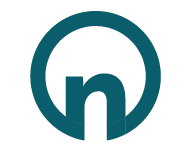The Unseen Tension
Ask any seasoned creative director about the ideal workflow for developing campaigns, and they’ll probably tell that that from the initial briefing to the final design, every step should remain under the agency’s control. With the client providing sign-off at predictable intervals. But in reality, the most transformative ideas seldom emerge from consensus and comfort. As Seth Godin famously observed, “Safe is risky.” That brief yet pointed phrase highlights the paradox faced by many creative agencies: playing it safe may keep the client and the team aligned, yet it often fails to deliver a genuinely groundbreaking result.
Enter the external strategist, “Stage Left.” This individual, unencumbered by the agency’s internal politics, brings fresh eyes to a project, often prodding the client and creative team alike to be bolder, braver, and less tethered to precedent. For many agencies, though, such a presence can initially feel unwanted. It introduces an element of unpredictability and may entail re-examining assumptions that the agency had considered a settled matter. The strategist’s task is to disrupt precisely those patterns that make an agency feel secure, in order to unlock ideas that can set a brand apart in a noisy marketplace.
Yet the reluctance to engage an external strategist is not without reason. Agencies stake their reputations on creative prowess; an outside perspective can sometimes be perceived as a threat or an attempt to undermine that hard-won expertise. Concerns about time, cost, and conflicting visions regularly arise. These reservations are understandable but can also stifle the potential for campaigns that truly break through.
The Agency’s Resistance: Comfort, Control, and the Desire for Clarity
Creative agencies thrive on the promise that they can take a client’s brief and transform it into a visually and conceptually arresting campaign. This promise rests on the agency’s ability to own the entire process, from market research to final creative execution. An external strategist arrives with a remit that often overlaps with some of these core competencies. For an agency that has meticulously perfected its workflow, this intrusion can appear to muddy the waters. Far from welcoming a new perspective, the agency may see only additional constraints, complicating approvals and pushing back delivery dates.
Then there is the matter of internal hierarchy. Agencies operate within clear structures: account managers handle relationships, creatives craft concepts, planners shape the marketing direction. Adding an external strategist can seem like a challenge to these roles, requiring teams to justify their decisions to yet another stakeholder. It might also raise scope-related anxieties. If a strategist uncovers an opportunity for deeper market analysis or advanced testing, the agency might fear that budgets and timelines will balloon, jeopardising carefully negotiated project parameters.
Yet many of these fears, understandable though they are, stem from the instinct to protect the existing process rather than improve it. The real threat for an agency is not the strategist who asks incisive questions, but the complacency that comes from rarely questioning “the way we do things here.” As Rick Rubin, renowned for shaping pioneering music albums, once said, “If it doesn’t feel impossible, it’s not the right idea.” While Rubin was referring to creative expression in music, the same principle applies to campaign development: comfort can be the enemy of boundary-pushing work. If the team remains too comfortable, the resulting ideas tend to blend in rather than stand out.
The Strategist’s Value: Fresh Perspectives that Drive Real Change
An external strategist can provide a vantage point unclouded by day-to-day agency politics or the inertia of familiar patterns. They observe the project with curiosity, unafraid to question whether a proposed tagline, visual direction, or even the entire brief truly aligns with the client’s deepest aims. In essence, a strategist serves as a conduit between the client’s higher-level objectives and the agency’s creative output.
A substantial part of the strategist’s value lies in probing the rationale behind decisions that might otherwise go unchallenged. It is surprisingly common for a creative team to make unspoken assumptions about what the client wants, or for the client to assume the agency fully grasps their broader business context without explicitly confirming it. The strategist’s role is to surface those assumptions, test them, and ensure every creative choice maps onto the client’s commercial or cultural objectives. Rory Sutherland, Vice Chairman at Ogilvy, remarked:
“The trouble with common sense is that it’s so terribly limiting.”
This captures the strategist’s mission perfectly: to move beyond common sense, inviting teams to consider aspects they might have missed.
Beyond simply playing devil’s advocate, strategists often introduce new research methods, novel consumer insights, or parallel sector case studies that challenge an agency to think differently. The outcome can be a campaign that transcends internal groupthink or surface-level consumer trends. By injecting informed, outside perspectives into the creative process, strategists spark new conversations—conversations that can lead to unexpected breakthroughs.
Building Trust: Collaboration, Respect, and Shared Ambition
For the partnership between an agency and external strategist to blossom, trust must be earned on both sides. If the strategist begins by criticising the agency’s previous work or dismissing its experience, the project may become mired in defensive posturing and friction. Conversely, if the agency refuses to consider fresh ideas or views the strategist’s suggestions as tedious formalities, any chance of collaboration dies a swift death.
Effective strategists recognise that creative teams bring immense talent and experience to the table. Rather than barging in with an “I know better” attitude, the strategist sets out to understand the agency’s culture, processes, and people. This means asking genuine questions—“Why did you take that approach?” or “Which parts of the brief do you see as non-negotiable?”—in a spirit of curiosity rather than confrontation. By listening and learning, the strategist can pinpoint how best to complement the agency’s strengths.
On the agency side, building trust means embracing the possibility that the strategist might unearth blind spots. Perhaps the target demographic is more complex than initially believed, or the brand needs a bolder voice than the creative concepts have delivered so far. Rather than resisting these findings, a confident agency integrates them, using the strategist’s insights as the raw material for fresh creative concepts. Over time, this collaborative process can enhance both the strategist’s impact and the agency’s reputation for innovation, creating a virtuous cycle.
The Payoff for Everyone: Greater Impact, Sharper Ideas
When an agency and strategist find a productive balance, the work often benefits immeasurably. The agency’s existing vision is refined and shaped by insights and a broader perspective, leading to campaigns that stand a greater chance of cutting through the noise. This might manifest in more provocative branding, a sharper key message that resonates more powerfully with the intended audience, or even a pivot in the overall marketing strategy that seizes an untapped opportunity.
Clients themselves can appreciate the role of the strategist once they see tangible results. A campaign that not only looks beautiful but also drives measurable outcomes—from website conversions to social media engagement and beyond—validates the decision to welcome an external voice. In many cases, the strategist also helps the client articulate business goals more clearly, leading to better briefing processes and a more strategic approach to marketing spend in future projects. Meanwhile, the agency gets to showcase work that is both creatively compelling and strategically robust, strengthening its competitive edge.
Of course, not every engagement with an external strategist ends in dramatic success. Sometimes the new perspective merely ensures that a project stays true to the client’s commercial objectives while fine-tuning the creative execution. Yet even in these less dramatic cases, the strategist’s influence often prevents complacency or missed opportunities. As Seth Godin reminds us, “You can’t be seen until you learn to see.” Strategists help agencies, and by extension their clients, see with sharper focus, spotting nuances or shifts in the landscape that others might overlook.
Embracing a Healthy Tension to Achieve the Exceptional
The uneasy relationship between creative agencies and external strategists stems from a desire for control, clarity, and, perhaps most critically, a desire for smooth sailing. But genuine innovation rarely occurs under conditions of perfect harmony. By its very nature, creativity thrives on collision—an occasional clash of ideas, a sudden shift in perspective, or the emergence of a challenging question at just the right time. As Rick Rubin’s maxim suggests, if a new approach does not initially feel daunting, it may lack the spark necessary to stand out in a crowded marketplace.
External strategists, for all the inconvenience they seem to introduce, play a vital role in catalysing such collisions. They champion the client’s broader aims, interrogate assumptions, and nudge agencies to experiment more boldly. When trust is established, their presence can transform projects that might otherwise have remained safe and forgettable into campaigns that not only meet objectives but genuinely move the needle for brands.
Yes, it takes careful handling of egos, schedules, and budgets to integrate a strategist effectively. Yet the long-term rewards often eclipse these short-term tensions. Campaigns become more resonant, clients more satisfied, and agencies more proud of the originality in their work. The real trick is for the agency to view the strategist not as a threat but as a catalyst, an agent that turns friction into a potent source of creative energy. When framed in this way, the external strategist is not an unwelcome meddler but a powerful ally in the pursuit of truly memorable ideas. After all, as Rory Sutherland has said, “We must allow for a certain amount of unreason, because reason alone cannot explain everything.” A thoughtful strategist can make all the difference.


